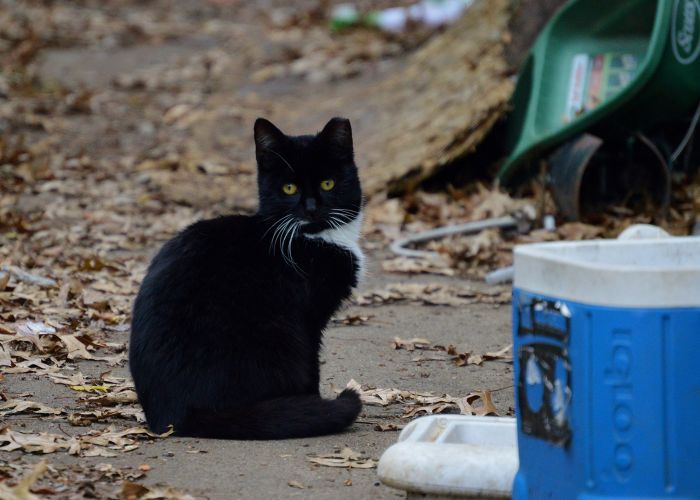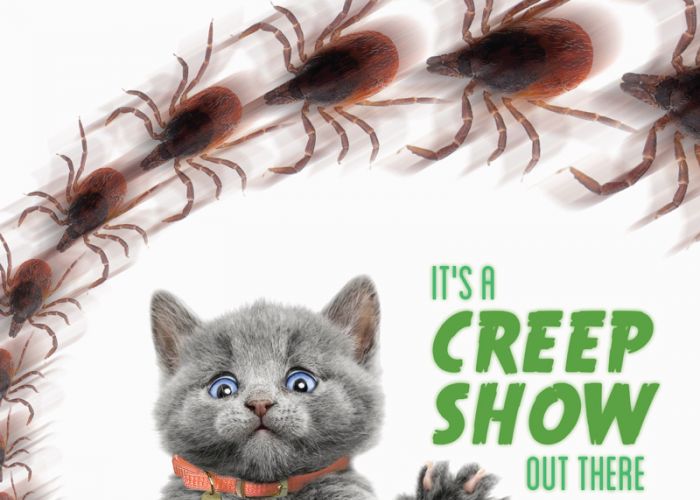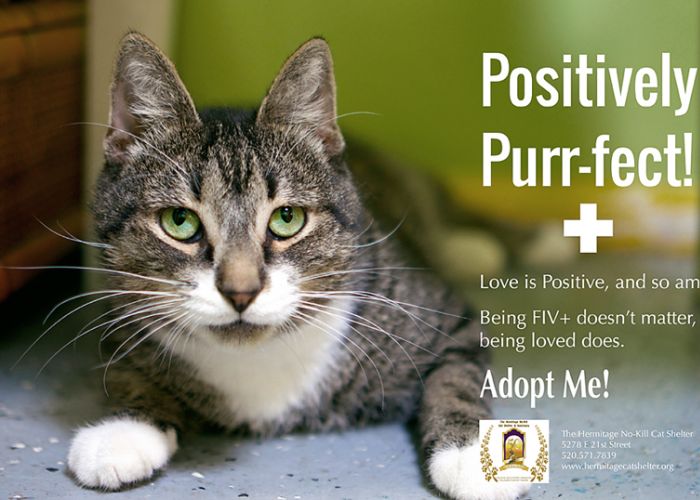Driving change
In Detroit and underserved neighborhoods around the country, Pets for Life is bridging gaps

"There’s another house burning,” Kristen Huston says, steering her white sedan, the trunk loaded with pet supplies, into one of the Detroit neighborhoods where her organization, All About Animals Rescue, does outreach. “Do you smell it?”
In the back seat, HSUS staffers Jason Schipkowski and Ashley Mutch sniff the air. Even with the windows rolled up—it’s early spring, but a thin sleet is falling—they can smell it: plastics, wood, a taint of smoke.
It’s hard to tell where the smell’s coming from, but Detroit is famous for its fires. Since the 1930s, the night before Halloween has been known in the city as Devil’s Night. It started as mostly pranks, kids acting up and causing only minor destruction. But as Detroit’s automobile industry crumbled and a huge chunk of the population moved away, the city began to suffer from the impact of that plunging economy and tax base. Arsons became common. The wave of fires peaked in the 1980s, but still, every day in Detroit, more houses burn than the police can investigate.
Driving through the neighborhood, Huston passes many abandoned houses—windows broken, shingles scattered in the front yard leaving bald patches on the roofs. Now and then, there’s a burnt-out shell, the blackened beams and collapsed walls standing in spiky piles between empty homes and others that are proudly occupied, where lights are on and chairs sit on front porches and small, pristine gardens display their early buds next to streets cluttered with trash.
Huston pulls up at a house and steps out to greet Jerome Ross, a tall, middle-aged man who’s come outside to meet them. His two dogs are tethered in the yard, the worn patches outside their wooden doghouses overflowing with warm straw bedding. Diablo, a big white pit-bull-type, bounds around delightedly and, once off his tether, plants himself expectantly in the middle of the group, his tongue lolling out as he glances from face to face expectantly. He’s clearly aware of what Huston’s car signifies: treats.
Huston digs in her trunk for a new rawhide while Ross stands by, smiling down at his pooch. Diablo, he explains, was a name the dog got from his previous owner. “I wouldn’t have named him that myself,” Ross says, shaking his head. “Name like that is asking for trouble.”
Huston has known Ross and his dogs for years now. Through the outreach work conducted by her organization, she helped get both dogs neutered and vaccinated, and they seem to regard her as a visiting aunt.
But the rest of the group are newcomers on the block, and across the street, one of Ross’s neighbors comes onto his porch to give them a onceover. He stays there for several minutes until Ross and Schipkowski wave him over. He approaches, smiling tentatively, and makes his hesitation clear: “I thought you might be the cops.”
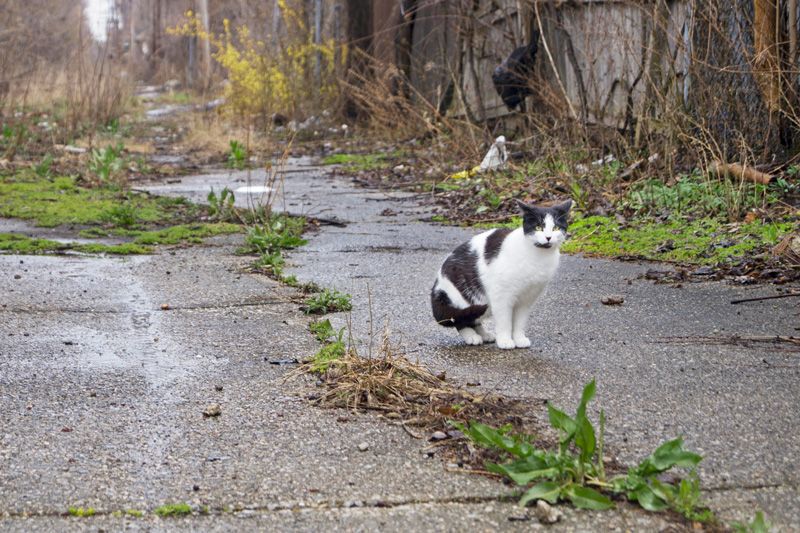
It’s an unsettling remark, and a reminder of the realities in the neighborhoods where Huston works, which are poor, isolated from services and largely racially segregated. In this mostly black part of Detroit, when a group of mostly white people wearing black windbreakers with logos shows up outside your house, they’re probably police. Or maybe they’re from your landlord. Or they may be utility reps planning to turn off your water. Or someone in some other official capacity that’s likely to mean one thing: Your day—maybe your whole life—is about to get worse.
So it’s no wonder that Ross’s neighbor, looking across at the group, didn’t notice the specifics of the logos on the jackets—on Schipkowski and Mutch, silhouettes of animals forming the outline of the United States; on Huston, a cat, a dog, a heart. Details like that can get lost at a distance. People just across the street can seem like they’re miles away.
Through their work with the HSUS Pets for Life (PFL) program, Huston, Schipkowski and Mutch are part of a movement of people around the country who are working to close those distances.
Most people are aware of how “food deserts”—areas where affordable and nutritious food is hard to access—impact the lives of working poor families, but those food deserts often coincide with a lack of other services, including veterinary clinics and other pet needs. That has enormous consequences for people and their pets. When their kids’ cat develops a hacking cough, how can they get her to a doctor when they have no car, and their friends have no cars, and the nearest vet is 10 miles away, and would charge them the amount they need to feed the family that week? If their beloved dog plays too rough, what can they do when there’s no behaviorist nearby and when paying for training would mean not paying the heating bill?
These pet service deserts have a broader impact as well. In the 1960s, shelters and animal control agencies in the U.S. were euthanizing an estimated 15 million homeless animals a year. Massive campaigns by The HSUS and other animal welfare organizations helped make spay/neuter a mainstream practice and brought national euthanasia numbers down by millions. Now, according to a national pet industry survey, 83 percent of owned dogs and 91 percent of owned cats in the U.S. are fixed.

But in the country’s most impoverished communities, data often reveals the inverse of the national numbers: About 90 percent of the pets living in these communities are unaltered. Most of the animals living in these communities will never see a veterinarian, or be touched by the animal welfare organizations that ostensibly serve the area.
Through Pets for Life, The HSUS has led the charge to make pet care services more accessible, preserving the bond between families and their companions and flipping that statistic on its head. Around 80 percent of clients with unaltered pets end up getting the surgery done through PFL.
After starting the program in 2011, HSUS staff now work in underserved neighborhoods in Atlanta, Chicago, Los Angeles and Philadelphia, going door to door and holding outreach events that people in the neighborhood can get to. The program brings free spay/neuter, vaccinations and other pet wellness services to people who wouldn’t otherwise be able to access or afford them.
In 2012, the support of HSUS donors and PetSmart Charities allowed the program to expand: PFL facilitated grants and provided mentoring to other animal welfare groups across the country. Under the leadership of its president, Amber Sitko, All About Animals Rescue was one of the first groups to sign on. As mentorship and training managers with the HSUS program, Schipkowski and Mutch travel the country helping these organizations implement the methods they learned overseeing PFL programs in St. Louis and Philadelphia, respectively.
Through these partnerships, thousands more people and pets are now receiving services they never would have otherwise, and tens of thousands more animals have been spayed or neutered. In Detroit alone, nearly 1,300 animals have been fixed, and nearly 2,000 have received other services such as vaccinations since All About Animals Rescue began its PFL program in 2012.
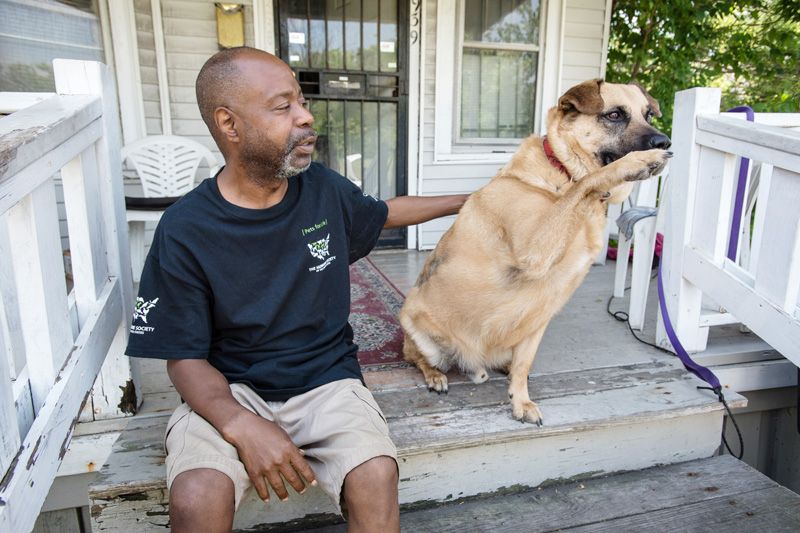
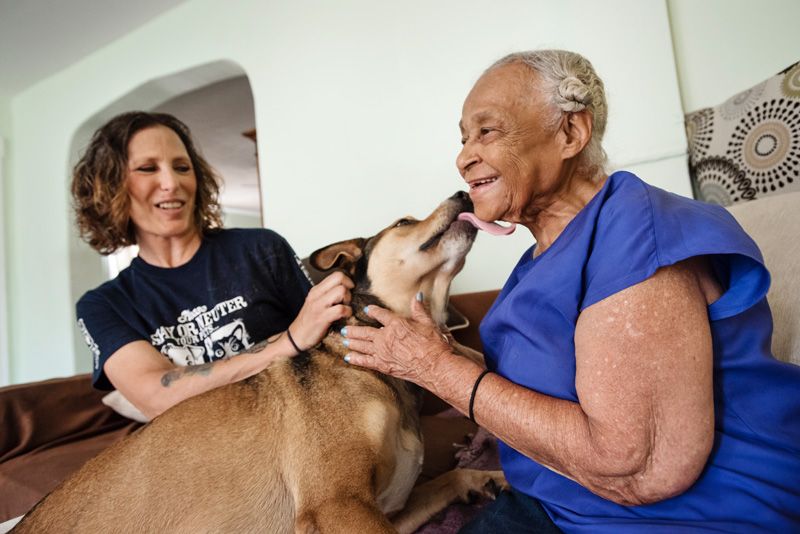
Moving to Detroit from Ann Arbor, Mich., was a culture shock for Huston. She’d been visiting Detroit for years with her boyfriend before they moved here so he could attend school, and she often felt a sense of dread as they approached: “I used to say, you know when you’re getting close to Detroit because of all the dead dogs on the freeway.”
They moved into the heart of old Detroit, an area called the Cass Corridor that was notorious for drugs, prostitution and homelessness—all the usual symptoms of entrenched poverty. In the park across the street, the lights were perpetually out; addicts and homeless people camped out there regularly.
“We would call the city every two weeks, and the lights would come back on,” says Huston. “Then they’d go out again for like three months and we’d have to email … and finally the lights would come back on.”
Melissa Miller, a former member of the HSUS Animal Rescue Team who left to head Detroit Animal Control, has watched the city’s fortunes rise and fall through the housing crisis of the late-2000s, when so many city services simply stopped. A lot of nonprofits popped up to fill the gaps, like the Mower Gang—“this group of guys who would bring their lawnmowers down to Detroit, and they’d mow the playgrounds so the kids would still have a place to play,” Miller says. “Block clubs started boarding up abandoned houses on the streets on their own, not waiting for a blight commission to do it.”
Now, finally, she’s watching an upturn again. “My trash gets picked up every week now—and almost always on the same day!” she says with a rueful laugh.
In the park across from Huston’s house, the lights are back on and have stayed on for a good stretch. As the city has gone through bankruptcy and officials debate what can be saved and how, property prices have begun to rise in downtown Detroit and in some historic neighborhoods. The area across from her house will soon be the home of the new Detroit Red Wings arena. Six years ago, Huston says, “I walked to my car at night a little faster. ... Now it’s fine, I can go down to my car at night and not think twice about it.”
But in the ZIP codes where Huston connects pet owners with free services, you’d be hard-pressed to find signs of urban renewal. In those neighborhoods, the number of people living below the poverty level is above 40 percent. In some neighborhoods, city services have simply been canceled as the city debates where to focus its limited resources, what parts of Detroit’s sprawl can be saved.

Given the powerful impact Pets for Life has had in underserved communities around the country, it’s surprising how new the philosophy is. For decades, few animal protection groups bothered to reach out to underserved neighborhoods, kept at a distance by presumptions that, when dissected, turned out to be terribly off base.
It was commonly assumed, for example, that certain demographics disapproved of spay/neuter. That malnourishment or untreated heartworm in the pets of the poor demonstrated that people from these neighborhoods didn’t love their animals the same way as more affluent pet owners. Perhaps most basic, many animal welfare groups figured that the people in these communities were already aware of their services, were able to access them and were simply choosing not to.
All of these assumptions have been found, repeatedly, to be false.
It’s not hard to figure out where these skewed impressions come from. Think of that parable about the men in a dark room with an elephant, trying to describe the animal based only on the part each of them happens to touch.
Schipkowski recalls his own time working for an animal welfare organization in St. Louis, before he got involved with Pets for Life. He was in the shelter all day and would see animals arrive in bad shape. He knew which neighborhoods they came from. And to get the organization’s message out to supporters and donors, he filled its newsletter and social media with what he believed was the whole truth and nothing but the truth: His organization was hard at work in the mean streets of the city, heroically combating the animal cruelty and neglect it found in neighborhoods full of violence, drugs and gangs.
When Schipkowski returned from his first Pets for Life training weekend and began doing outreach himself—in those very neighborhoods—the first door that was opened gave him a whole new picture.
Behind that door he met two little dogs and 85-year-old Willie Anne Burston, who clearly adored them. She welcomed Schipkowski into her home and, when he explained why he was there, proceeded to introduce him to everyone in the neighborhood. “She had grown up in St. Louis, worked in hospitality down by the riverfront, and I’m interested in St. Louis history. I could have stayed there forever listening to her experiences,” he recalls. “So I had this two-hour conversation with this amazing person that I never would have otherwise met. And I couldn’t stop thinking about how many web stories and emails and talking to donors where … I had been painting all of North St. Louis with this really broad brush, talking about crime and druggies. She wasn’t a druggie. She may have been on some blood pressure medication.”
“Once I got back to the shelter I was sobbing,” he admits, “because I was so ashamed that I’d been blind to how many kindred spirits are out there.”
The work of Pets for Life and its push for a more holistic approach to animal welfare has brought about some soul-searching in the animal protection world. There’s a growing realization that the traditional narrative about animal cruelty—an innocent animal victim suffering at the hands of heartless human monsters—is an inadequate and inaccurate depiction in communities where there’s not enough money or access to basic services, and where people and animals are suffering together.
There are clear-cut animal cruelty cases on a regular basis—the cat thrown out of a window, the dog with her mouth duct-taped shut. They make for shocking headlines and clear villains, and they shape our understanding of what cruelty looks like and how it must be confronted.
Those clear cases of deliberate cruelty are disturbing, but they’re also far easier to comprehend and tackle than the gray zone where the only villain is poverty, and where that villain never goes to jail.
Miller knows well the challenges her agency and city are facing. The officers at Detroit Animal Control see them on a regular basis. Detroit gets cold in the winter, and sometimes her officers visit a house because they can see there’s a dog in the back lot with no doghouse for shelter. But when they knock on the door, “the kids inside are wearing their winter coats because their heat’s been turned off.”
In most cities, PFL goes door to door in only one or two ZIP codes at a time, ensuring total saturation before adding to the focus area. In Detroit, because so many homes are vacant, Huston does outreach in four separate ZIP codes. But otherwise, the problems here are much the same as in other cities.
“You say ‘Detroit,’ and people’s faces sort of cringe,” Mutch points out, noting that because the city’s problems—the decline of the auto industry, the urban blight, the fires—have been news for decades, people tend to know about them in a way they don’t know about the challenges facing the poor in Gary, Ind., or Jefferson Parish, La., or Fargo, N.D.—or any of the 30 communities where Pets for Life mentorship groups now work.
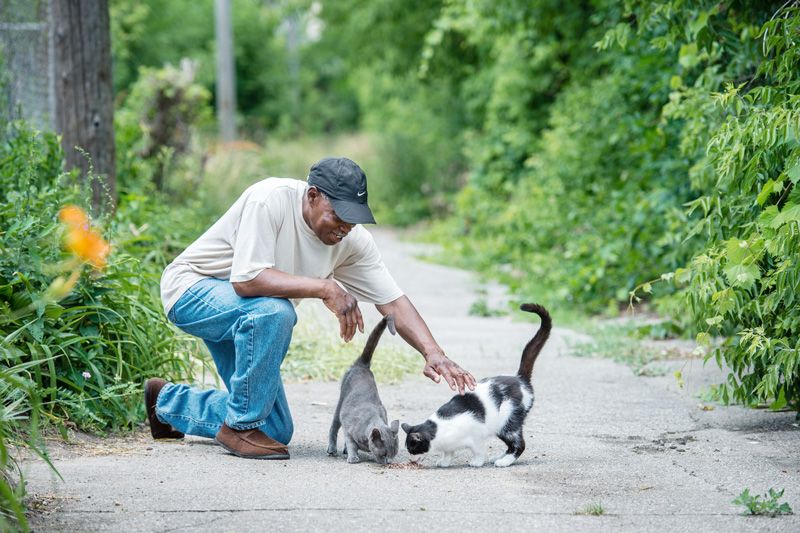

I was wary at first, going to some of these neighborhoods, the same stereotypes—drug dealers or gangbangers—judging people before I met them,” Huston admits. “Once you get into these neighborhoods, they aren’t any different.” Over the years, she’s grown close to many of her clients and their pets. As the day progresses and the group visits more people, it’s clear how happy they are to see her; most of the dogs go wild with delight.
Mutch has seen this shift happen again and again in people who get involved with Pets for Life. Once, in fact, she might have seen it in the mirror.
Mutch graduated with a degree in criminal justice and went to work as a humane law enforcement officer in Pennsylvania, working on cases involving everything from dogfighting to puppy mills to farm animals, before she was transferred into Philadelphia.
To a hammer, everything looks like a nail, and to Mutch—whose department was featured on Animal Planet’s TV show Animal Cops—many of the situations she encountered in Philly looked, at first, like crimes. Some of them technically they were crimes, according to the laws she was there to enforce, laws she knew by heart.
“My brain was on the punitive path. That’s what I’d learned, and I was handed a gun and given all these police powers and given all these cases of cruelty,” she says. “I was kind of molded into what I thought I should be in animal welfare.”
And it seemed to be working: She and her teammates were seizing animals, and they were regularly portrayed as heroes on TV.
But after a while, some of the work didn’t sit right with her.
“It really started to hit me when I was working in Philly,” she says, recalling cases where the law stipulated that the dog with untreated fleas, or the cat with a tumor that hadn’t been removed, or the dog kept on a chain in a back lot should be seized. “Time after time, I started taking people’s pets … because, per the law, I could.”
Not only did Mutch start seeing the owners’ grief over the loss of their animals, she saw the senselessness: At the crowded shelter, she would sometimes check on animals she had confiscated and find out they’d been euthanized—so basically, an animal had died over “something we could have fixed with a $10 dewormer,” or when just a little training for a rambunctious adolescent dog might have persuaded his owner to keep him indoors rather than on a chain out back.
“And I was like, ‘What am I doing?’ I was pulling apart families,” she says. “I still feel guilty today about some of the animals I took … basically just because people were poor.”
Mutch ended up leaving the job and might not have gotten back into animal welfare work had she not heard about Pets for Life. When she got involved, she found herself back on the same streets in Philly where she had worked as an officer. “And for me it was kind of a redemption of all the negativity that I had brought to the community in the past,” she says.
Having worked in underserved neighborhoods in an enforcement capacity before, Mutch saw how those combative relationships contributed to the sense of mistrust. As she knocked on doors to offer free services and support, people often initially responded with suspicion.
Mutch understood. It made total sense that “people would peek through the blinds because they were like, ‘Now what?’ It wasn’t like a warm welcome of ‘Oh, someone’s here to help me!’” she says. “Because no one was ever there to help them.”
Now, in city after city, someone is there to help—and as more people around the country learn about the work, more animal welfare groups have begun to incorporate the PFL approach.
When Miller came to Detroit Animal Control, the staff hadn’t been doing much outreach or intervention in the community; it just wasn’t part of the mindset. But a while ago, one of her officers went to pick up a cat whose family was giving her up, and the officer noticed how upset the couple was. “So he asked, ‘Why are you giving her up?’ And they said she was destroying the furniture,” she says. The officer checked their setup and asked if they had a scratching post. “They had no idea what that was.”
“And he said, ‘You know, if I come back with some supplies, will you give it a week and see if it helps?’ And they were like ‘Yes!’ They were all about it. So he went through our donations closet and found some cat toys and scratching pads, and went back and taught them how to clip her claws, because they had never seen that, and when he came back, he was like, ‘Is this that outreach thing you’ve been talking about? Because it feels amazing.’”
On the last of their outreach visits in Detroit, Schipkowski and Mutch go with Huston and All About Animals’ Catherine Garrett to visit Laward Ellison. Ellison, a retiree, has long had a kind heart for the many cats he sees wandering his neighborhood. Next to his house sits an old van he’s converted into a cat shelter, complete with blankets and hiding places. At least four cats poke their heads up from various nooks and crannies as the team peeks in, and more cats follow Ellison into the backyard, where he has additional shelters to keep them warm. Ellison was doing this work even before he met Huston. Like many of the people PFL meets in these poorer communities, he felt bad for the animals and set out to help them. He required no encouragement and was financing the cats’ food and shelter himself, but he didn’t have the money to get them spayed.
Through PFL, Huston first helped him get all the mother cats spayed for free, and then they had the litters fixed as well. Slowly, they’ve started to bring in more cats on the block for surgery. He never asks, but Huston brings him cat food and has provided a few outdoor cat houses too, along with flea preventative for the cats who’ll allow them to apply it.
Now Ellison and Huston and the HSUS team—talking shop and laughing as various kitties slink around and make figure 8s between their ankles—look over his domain at a little feline haven: a van full of napping kitties and a little shelter set up in Ellison’s back garden, and even beyond, across the overgrown alleyway and into the vacant lot behind his house. There, across a stretch of grass, the burned remains of one of the city’s suspicious house fires sit soaking up the light rain.
Amidst the blackened cinders, beneath an overhang protected from the elements, Ellison has set up more cat shelters. The team can see cats coming and going—cats who are safer now, who have bright eyes and fluffy fur and plenty of food in their bellies. Who would have imagined, when that house burned, that it could become the site of such kindness?
Schipkowski and Mutch might have imagined it. In Detroit, they’ve found what they find in most underserved places: people—partners—who love their pets, whose hearts are in the same place, who work to solve problems, who just need resources to make an impact. These people may not get the attention that fires and crimes and corruption get. But they’re everywhere, once you know how to look.


